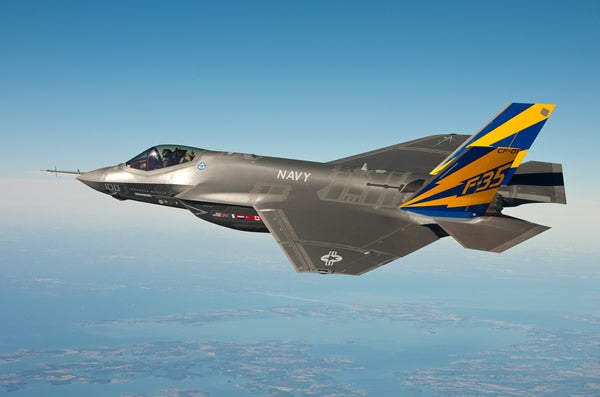The transparency of some anti-defense ploys boggles the imagination. The most recent one has to do with the production rates of the new F-35 multi-role fighter.
This aircraft will replace several of the worn-out fighters of the Air Force, Navy, and Marine Corps that are sometimes older than the pilots who fly them. The multi-role abilities of the F-35 will benefit the readiness and war fighting capabilities of all the branches of service and will markedly improve national security at a time when threats are increasing in number and magnitude.
The Joint Strike Fighter (JSF), as the F-35 is known, is designed to maximize both capability and survivability. Its production methodology was developed to allow for faster fielding of the aircraft and calls for incremental improvements in the design as early models roll of the line. Safety is not sacrificed, and the process known as “concurrency” puts the best available plane in the hands of the warfighters as soon as possible. It also allows for cuts in cost per copy as efficiencies build upon one another.
Unfortunately, forces that never wanted the nation’s pilots to have this aircraft in the first place are now trying to pull a bait and switch. They are saying that there is too much concurrency, and they want to slow down production of the JSF. This would drive up the cost per unit of each JSF and probably force some of our allies to cut the number of planes they have ordered. These cuts would further drive up cost, creating a vicious cycle of cost increases.
The clear goal here is to slow down production and drive up costs in a spiral that will eventually allow opponents of military modernization and proper readiness to call for killing the program altogether. Congress should not allow this to happen.
The U.S. Air Force has already cut back its requests to the bare bones of readiness. To reduce the fleet further, slow the rate of production, and eventually kill the JSF in the name of artificially escalated cost overruns is irresponsible.
Rather than give into this sneak attack, the Department of Defense should push up the rate of production. Congress should support them, protect the F-35 program, and give U.S. forces the aircraft they need to defend the nation.

